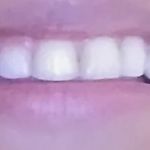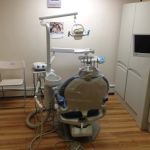
How to Treat Gum Recession and Prevent It – Effective Solutions for Healthy Gums
- 1. Understanding Gum Recession
- 2. Causes of Gum Recession
- 3. Prevention Tips for Gum Recession
- 4. Treatments for Gum Recession
- 5. Natural Remedies to Prevent Gum Recession
Gum recession is a common yet concerning oral health issue that can lead to exposed tooth roots, increased sensitivity, and even tooth loss if left untreated. Over the years, I’ve learned that addressing gum recession early can make a significant difference in the health of your teeth and gums. Many people wonder how to treat gum recession and prevent it from worsening. Luckily, there are several strategies, both preventive and corrective, that can help protect your gums and improve your oral health. In this article, I’ll share what I’ve learned about treating and preventing gum recession, and how to maintain healthy gums for years to come.
1. Understanding Gum Recession
Gum recession is a condition where the gum tissue that surrounds the teeth pulls back, exposing more of the tooth or even the tooth root. This is not only uncomfortable but can also lead to various oral health problems. Over time, this exposure can lead to increased sensitivity, gum disease, and tooth decay, which is why it’s important to address gum recession as soon as you notice the symptoms.
During my own research and personal experience, I’ve found that gum recession is often gradual, and its early signs can be subtle. For instance, you may notice that your teeth look longer than usual or that your gums seem to be moving away from your teeth. If you experience any of these signs, it’s important to seek treatment before the recession becomes more severe.
2. Causes of Gum Recession
Understanding the causes of gum recession is crucial in preventing it from happening. There are several factors that contribute to gum recession, and addressing them can go a long way in preserving your gum health.
2.1. Poor Oral Hygiene
One of the leading causes of gum recession is poor oral hygiene. Without regular brushing and flossing, plaque and tartar build-up can irritate the gums, leading to gum disease. Gum disease is a major contributor to gum recession, and it often goes unnoticed until it’s advanced.
2.2. Brushing Too Hard
While good oral hygiene is essential, brushing too hard can actually do more harm than good. Aggressive brushing with a hard-bristled toothbrush can wear down the gum tissue and cause it to recede over time. It’s important to brush gently using a soft-bristled toothbrush to avoid damaging the gums.
2.3. Genetic Factors
For some people, gum recession may be hereditary. If your family members have experienced gum recession, you may be more prone to developing it yourself. In these cases, regular checkups and preventive care become even more crucial.
2.4. Hormonal Changes
Hormonal changes, particularly in women, can increase the risk of gum recession. Pregnancy, menopause, and puberty can all cause shifts in hormone levels, making the gums more sensitive and vulnerable to recession.
2.5. Teeth Grinding and Clenching
Teeth grinding and clenching (often due to stress or misaligned teeth) can put excessive pressure on the gums and teeth, leading to gum recession. If you suspect you grind your teeth at night, using a nightguard may help protect your gums and teeth.
3. Prevention Tips for Gum Recession
Preventing gum recession is far easier than treating it once it’s occurred. I’ve found that adopting a few simple habits can go a long way in protecting your gums and preventing recession from worsening.
3.1. Maintain Proper Oral Hygiene
The first step in preventing gum recession is to brush and floss regularly. Brush your teeth twice a day with fluoride toothpaste and floss at least once daily to remove plaque from between the teeth and along the gumline. Use a soft-bristled toothbrush to avoid damaging your gums, and consider using an electric toothbrush that can provide a more gentle yet thorough cleaning.
3.2. Avoid Aggressive Brushing
As mentioned earlier, brushing too hard can wear down your gums. Use gentle, circular motions when brushing and avoid pressing too hard on your toothbrush. A good rule of thumb is to let the bristles do the work instead of relying on pressure.
3.3. Use a Mouthguard for Teeth Grinding
If you grind your teeth at night, a custom-fitted mouthguard can protect your teeth and gums from damage. I’ve personally seen a noticeable difference in gum health after using a mouthguard consistently, and it can prevent unnecessary stress on your teeth and gums.
3.4. Quit Smoking
Smoking is a major risk factor for gum recession and gum disease. It weakens the immune system and makes it harder for the body to fight off infections, including gum disease. If you smoke, quitting can greatly improve your oral health and help prevent gum recession.
4. Treatments for Gum Recession
If you already have gum recession, there are several treatments available to help stop its progression and even repair the damage. Depending on the severity of your gum recession, these treatments can range from non-invasive options to surgical interventions.
4.1. Scaling and Root Planing
For mild cases of gum recession caused by gum disease, your dentist may recommend scaling and root planing. This deep cleaning treatment removes plaque and tartar from below the gumline and smooths the root surfaces, allowing the gums to reattach to the teeth.
4.2. Gum Grafting
If your gum recession is more severe, your dentist may suggest a gum graft. This procedure involves taking tissue from another area of your mouth and attaching it to the receded area. Over time, the grafted tissue will heal and integrate with the existing gum tissue, helping to restore gum health.
5. Natural Remedies to Prevent Gum Recession
While professional treatments are often necessary for advanced gum recession, there are several natural remedies you can use to help prevent further damage and improve your gum health.
5.1. Saltwater Rinse
A saltwater rinse is a simple, natural remedy that can help reduce inflammation and promote healing of your gums. Mix a teaspoon of salt in warm water and rinse your mouth with it for 30 seconds. This can help soothe irritated gums and prevent infection.
5.2. Aloe Vera
Aloe vera has natural anti-inflammatory properties that can help soothe and heal your gums. Apply fresh aloe vera gel directly to the affected areas of your gums to reduce swelling and promote healing.
For more information on gum recession prevention and treatment options, visit Dentistry Toothtruth for expert advice and recommendations.







 Dr. May P. Chu, DDS5.0 (161 review)
Dr. May P. Chu, DDS5.0 (161 review) Onsite Dental4.0 (21 review)
Onsite Dental4.0 (21 review) Gentle Dental Lakewood4.0 (183 review)
Gentle Dental Lakewood4.0 (183 review) Piedmont Periodontics4.0 (34 review)
Piedmont Periodontics4.0 (34 review) Nanuet Family Dentistry: Dr. Srinivasa5.0 (2 review)
Nanuet Family Dentistry: Dr. Srinivasa5.0 (2 review) Rumack and Harmer Pediatric Dentistry5.0 (11 review)
Rumack and Harmer Pediatric Dentistry5.0 (11 review) The Importance of Oral Health Education During Pregnancy for a Healthy Pregnancy
The Importance of Oral Health Education During Pregnancy for a Healthy Pregnancy Best Tips for Brushing Your Teeth Properly for Healthy Gums: Essential Techniques for Oral Health
Best Tips for Brushing Your Teeth Properly for Healthy Gums: Essential Techniques for Oral Health Why Skipping Dental Checkups Can Lead to Bigger Oral Health Problems
Why Skipping Dental Checkups Can Lead to Bigger Oral Health Problems Advantages of Porcelain Dental Restorations
Advantages of Porcelain Dental Restorations How Can Diabetes Cause Tooth and Gum Problems? Preventing and Managing Oral Health Issues
How Can Diabetes Cause Tooth and Gum Problems? Preventing and Managing Oral Health Issues Healthy Habits for Promoting Good Oral Health and Hygiene: Tips for a Healthy Smile
Healthy Habits for Promoting Good Oral Health and Hygiene: Tips for a Healthy Smile